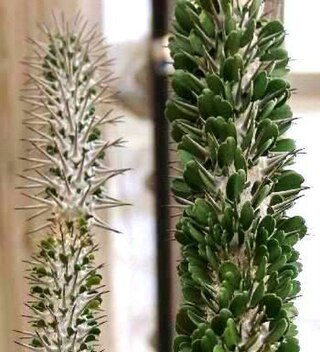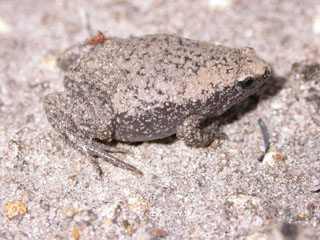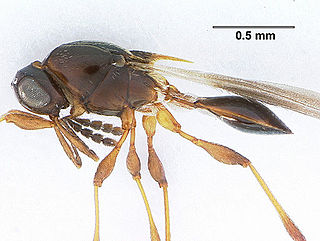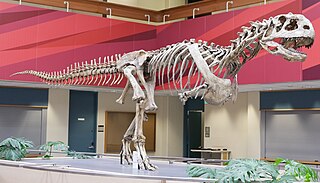
The family Psittacidae or holotropical parrots is one of three families of true parrots. It comprises the roughly 10 species of subfamily Psittacinae and 157 of subfamily Arinae, as well as several species that have gone extinct in recent centuries. Some of the most iconic birds in the world are represented here, such as the blue-and-gold macaw among the New World parrots and the grey parrot among the Old World parrots.

The Tadorninae is the shelduck-sheldgoose subfamily of the Anatidae, the biological family that includes the ducks and most duck-like waterfowl such as the geese and swans.
Société Nationale Malgache de Transports Aériens S.A., operating as Air Madagascar, is an airline based in Antananarivo, Madagascar. It is the national airline of Madagascar operating services to Europe, Asia and neighbouring African and Indian Ocean island destinations, from its main base, Ivato International Airport in Antananarivo. It also operates an extensive domestic network.

Didiereaceae is a family of flowering plants found in continental Africa and Madagascar. It contains 20 species classified in three subfamilies and six genera. Species of the family are succulent plants, growing in sub-arid to arid habitats. Several are known as ornamental plants in specialist succulent collections. The subfamily Didiereoideae is endemic to the southwest of Madagascar, where the species are characteristic elements of the spiny thickets.

The Microhylidae, commonly known as narrow-mouthed frogs, are a geographically widespread family of frogs. The 683 species are in 63 genera and 11 subfamilies, which is the largest number of genera of any frog family.

Cophylinae is a subfamily of microhylid frogs endemic to Madagascar. It has over 100 species in eight genera. Members of this subfamily range from minute to fairly large, and they are highly ecologically diverse. DNA barcode research has revealed a significant taxonomic gap in this subfamily, and an estimated 70+ candidate species were identified. Many of these have subsequently been described, as well as numerous new discoveries.

The Hymenopteran superfamily of parasitoid wasps, Platygastroidea, has often been treated as a lineage within the superfamily Proctotrupoidea, but most classifications since 1977 have recognized it as an independent group within the Proctotrupomorpha. It is presently has some 4000 described species. They are exclusively parasitic in nature.

The hymenopteran family Platygastridae is a large group of exclusively parasitoid wasps, mostly very small (1–2 mm), black, and shining, with geniculate (elbowed) antennae that have an eight-segmented flagellum. The wings sometimes lack venation, though they may have slight fringes of setae.

Migidae, also known as tree trapdoor spiders, is a family of spiders with about 100 species in eleven genera. They are small to large spiders with little to no hair and build burrows with a trapdoor. Some species live in tree fern stems. They have a Gondwanan distribution, found almost exclusively on the Southern Hemisphere, occurring in South America, Africa, Madagascar, Australia, New Zealand and New Caledonia.

The Phasmatidae are a family of the stick insects. They belong to the superfamily Anareolatae of suborder Verophasmatodea.

The Disteniidae are a small family of beetles in the superfamily Chrysomeloidea, traditionally treated as a group within the Cerambycidae.

The Ceroxyloideae are a subfamily of flowering plants in the palm family found mainly in the Americas with an outlying genus in each of Australia, Madagascar, and the Comoros. Recently revised, the former subfamily Phytelephantoideae was reduced to the tribal level and included, while the Hyophorbeae tribe was reassigned to Arecoideae; it now contains eight genera.
Dytomyia is a genus of flies in the family Dolichopodidae. It is known from Australia, Madagascar and Kenya, with an undescribed species from Papua New Guinea.

Grammitidoideae is a subfamily of the fern family Polypodiaceae, whose members are informally known as grammitids. It comprises a clade of about 750 species. They are distributed over higher elevations in both the Old and New World. This group was previously treated as a separate family, Grammitidaceae until molecular phylogenies showed it to be nested within the Polypodiaceae. It has since been treated as an unranked clade within subfamily Polypodioideae, and, most recently, as a separate subfamily.

Saltasaurinae is a subfamily of titanosaurian sauropods known from the late Cretaceous period of South America, India and Madagascar.

Gracillariinae are a subfamily of moths which was described by Henry Tibbats Stainton in 1854.

Majungasaurinae is a subfamily of large carnivorous theropods from the Upper Cretaceous, found in Madagascar, India, and France. It is a subgroup within the theropod family Abelisauridae, a Gondwanan clade known for their thick and often horned skulls and vestigial arms. The two subfamilies of Abelisauridae are Carnotaurinae, best known from the South American Carnotaurus, and Majungasaurinae, consisting of Madagascar’s Majungasaurus and its closest relatives. Their ancestors emerged in the Middle Jurassic, and the clade lasted until the Upper Cretaceous.

Maaminga is a genus of parasitic wasps containing two species and constituting the family Maamingidae. So far only known from New Zealand, the two named species are Maaminga marrisi and M. rangi. The genus name derives from the Māori word "māminga", simply translated as "trickster" as the species evaded discovery for so long.

Cybalomiinae is a subfamily of the lepidopteran family Crambidae. It was described by Hubert Marion in 1955.
Ismaridae is a family of insects belonging to the order Hymenoptera. About 50 species are known in this small relictual group; all the species for which the biology is known appear to be hyperparasitoids that parasitize Dryinidae.
















